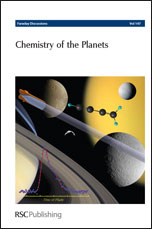Almost 500 extrasolar planets have been found since the discovery of 51 Peg b by Mayor and Queloz in 1995. The traditional field of planetology has thus expanded its frontiers to include planetary environments not represented in our Solar System. We expect that in the next five years space missions (Corot, Kepler and GAIA) or ground-based detection techniques will both increase exponentially the number of new planets discovered and lower the present limit of a ∼1.9 Earth-mass object [e.g. Mayor et al., Astron. Astrophys., 2009, 507, 487]. While the search for an Earth-twin orbiting a Sun-twin has been one of the major goals pursued by the exoplanet community in the past years, the possibility of sounding the atmospheric composition and structure of an increasing sample of exoplanets with current telescopes has opened new opportunities, unthinkable just a few years ago. As a result, it is possible now not only to determine the orbital characteristics of the new bodies, but moreover to study the exotic environments that lie tens of parsecs away from us. The analysis of the starlight not intercepted by the thin atmospheric limb of its planetary companion (transit spectroscopy), or of the light emitted/reflected by the exoplanet itself, will guide our understanding of the atmospheres and the surfaces of these extrasolar worlds in the next few years. Preliminary results obtained by interpreting current atmospheric observations of transiting gas giants and Neptunes are presented. While the full characterisation of an Earth-twin might requires a technological leap, our understanding of large terrestrial planets (so called super-Earths) orbiting bright, later-type stars is within reach by current space and ground telescopes.
You have access to this article
 Please wait while we load your content...
Something went wrong. Try again?
Please wait while we load your content...
Something went wrong. Try again?

 Please wait while we load your content...
Please wait while we load your content...